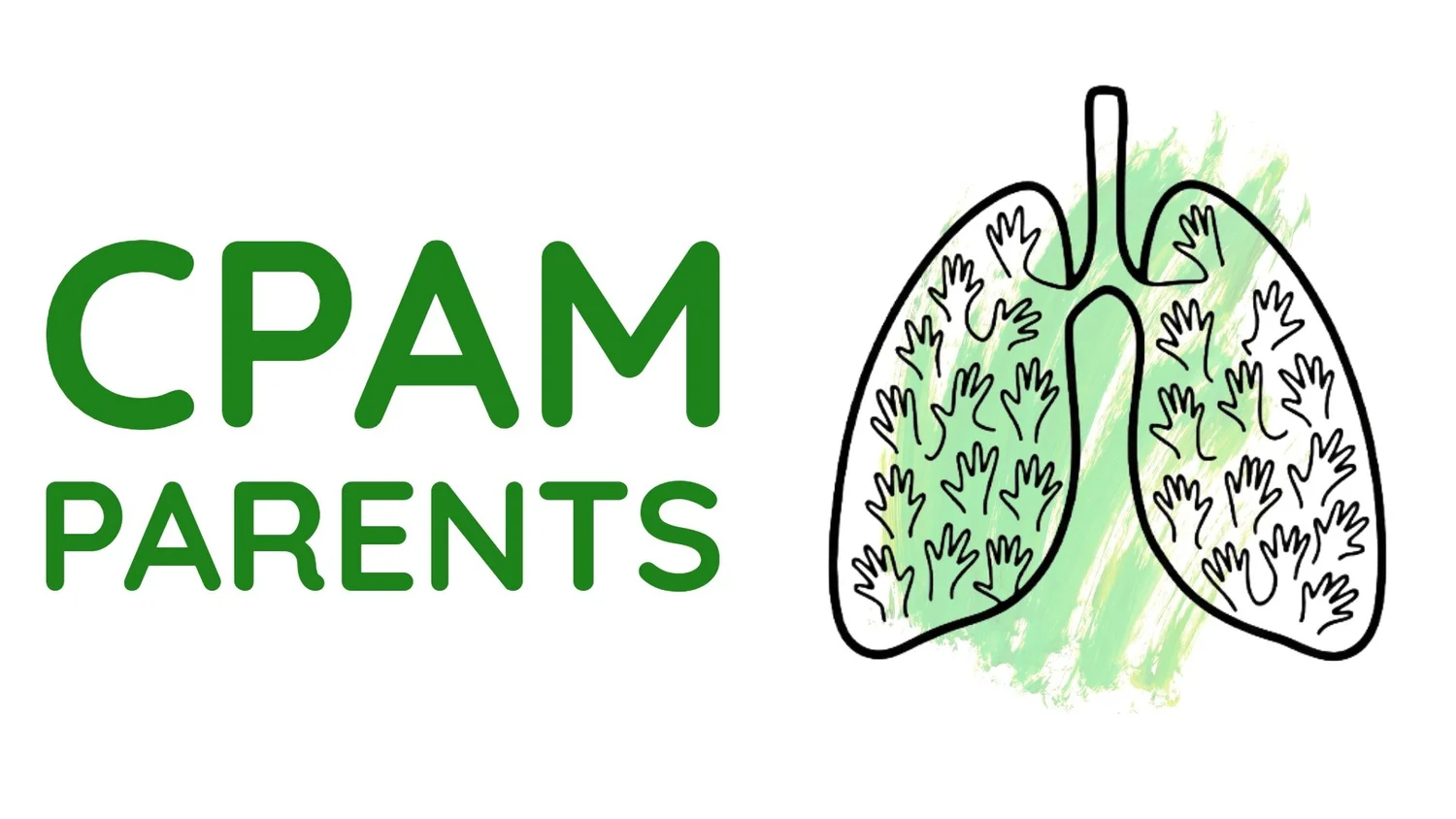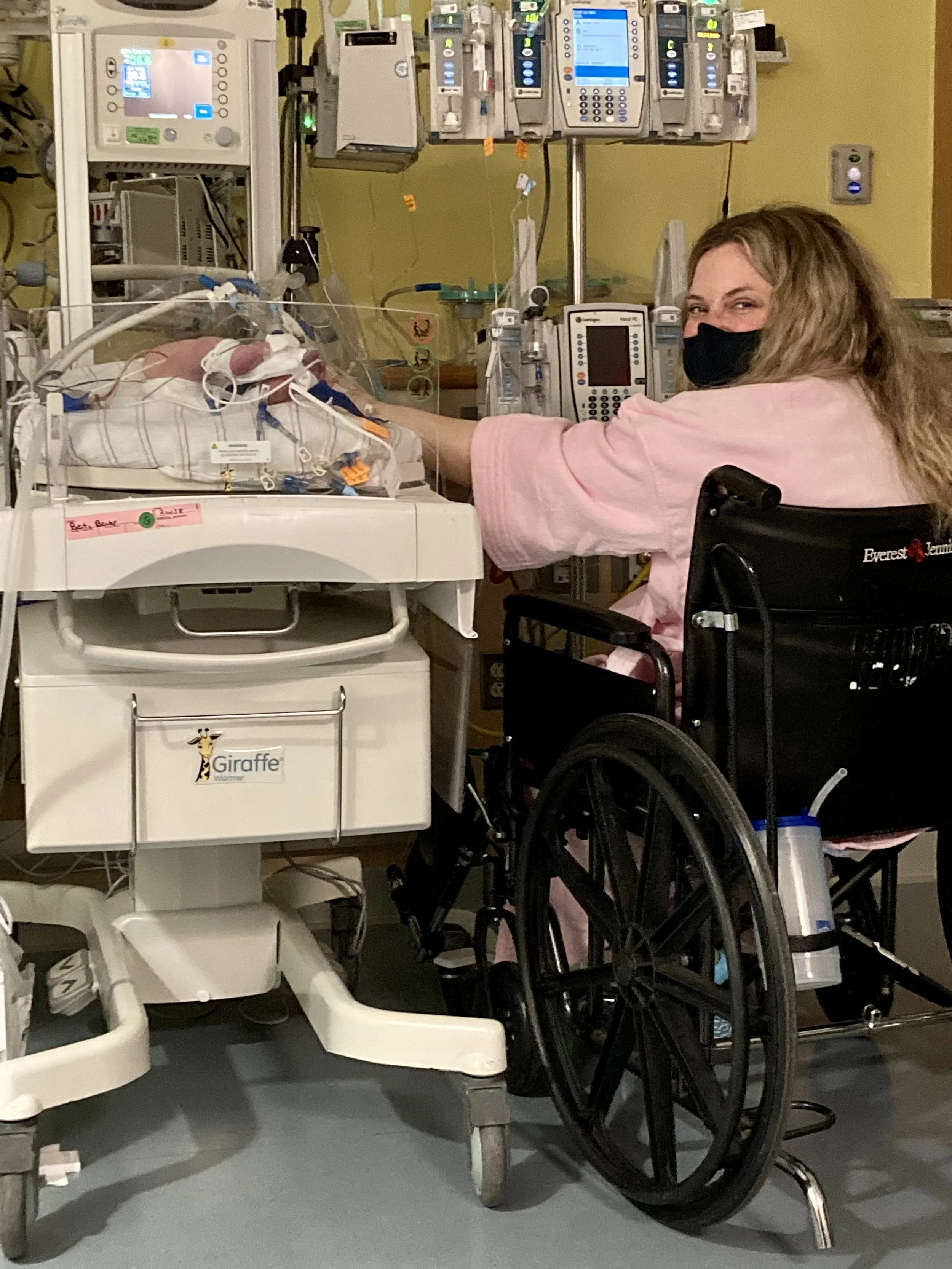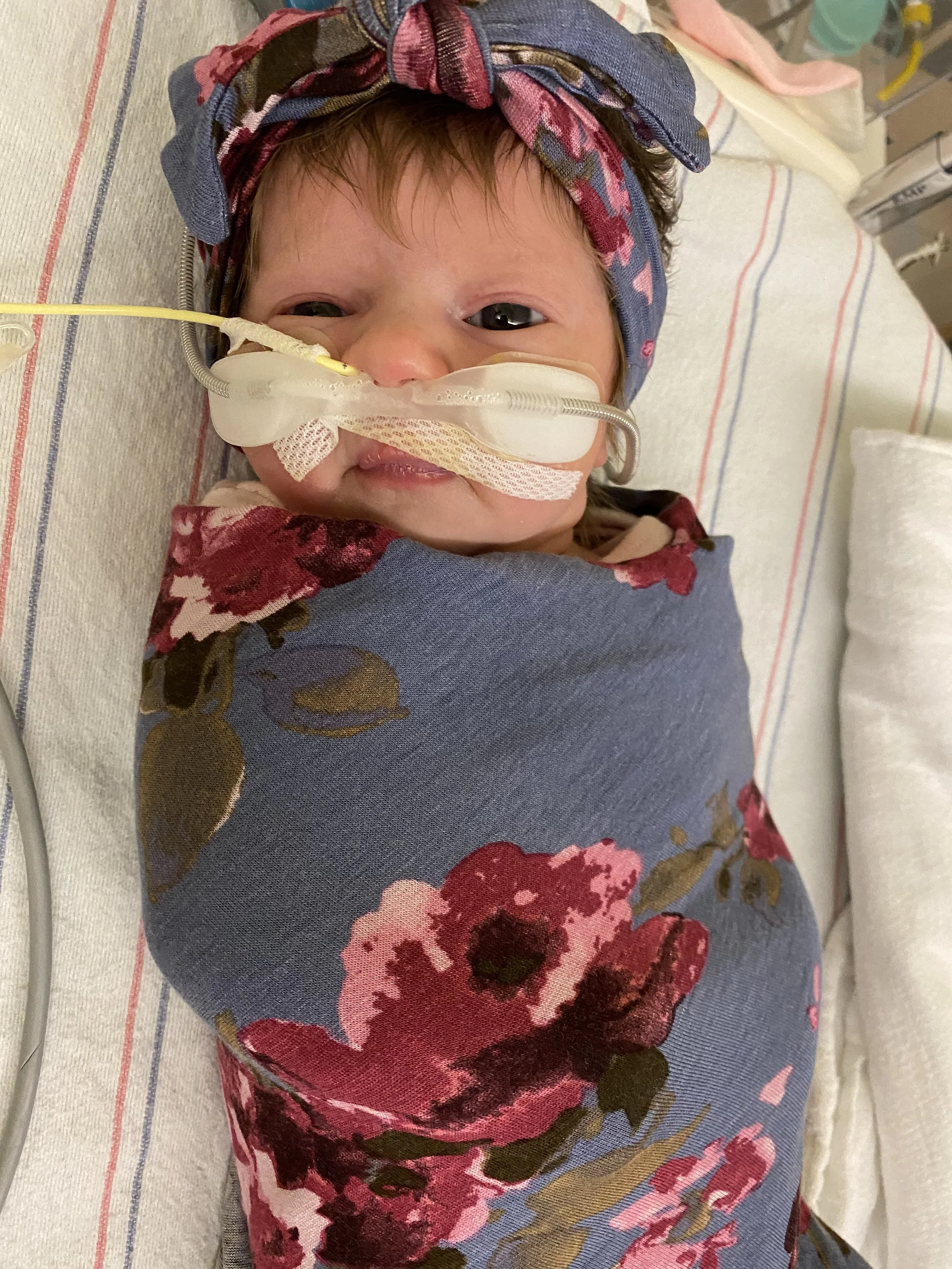6/ Lexie’s story
Home > Family Stories > Lexie’s story
At 36 weeks, Lexie was diagnosed with a large macrocystic CPAM that had been missed earlier in pregnancy. After struggling to get clear answers locally, her parents transferred care to the Children’s Hospital of Philadelphia (CHOP), where an experienced surgical team delivered and operated on Lexie immediately after birth. Despite the severity of her lung lesion, she recovered quickly and today—at 4.5 years old—is thriving and completely healthy.
Lexie is a pseudonym.
The diagnosis
We found out at our routine 36 week ultrasound that our daughter, Lexie, had a significantly large macrocystic lesion on her right lung (it was apparently missed on the anatomy scan). We were immediately transferred to Eastern Virginia Medical School (EVMS) and The Children’s Hospital of the King’s Daughters (CHKD), both in Norfolk, Virginia, but after a week of being their patient, our many questions about her surgery and neonatal care either weren’t being answered, or the answers we did get were so vague that it made us feel uncomfortable. Appointments were difficult to get and we did not have time on our side as I was quickly approaching my due date. After researching ourselves, we went to the Children’s Hospital of Philadelphia (CHOP) and we are so thankful we did.
Changing medical teams
Her CPAM was very serious due to the size of her mass. It was 2-3 times larger than most lung masses at 2.98 CVR. All it took was my husband, Kurt, messaging CHOP through the message service on their website, and he received a phone call immediately. He told them the dimensions of the mass and they told us to come the next day to get evaluated and to meet their team. We were surprised at how quickly they could set us up with all of this. It’s the urgency we were waiting for, but never received.
After driving half the night at 37.5 weeks pregnant, we started our 10 hour day at CHOP and immediately felt relief. I had a fetal echocardiogram and a 2 hour long ultrasound. We met with my new MFM Obstetrician and Lexie’s surgeon, Dr. Adzick, the head of the fetal medicine department at CHOP and the chief of surgery himself. We didn’t feel uninformed anymore. We didn’t feel like we had to ask a million questions ourselves, only to be told, “You’ll have to wait and ask the surgeon,” or “We won’t really know until we get her out and evaluate her.”
Dr. Adzick has pioneered fetal and neonatal procedures on infants and fetuses with lung lesions and has over 30 years of experience with fetal abnormalities. He knew exactly what to do and had an immediate plan from prenatal care to the details of her surgery to her recovery. CHOP performs thoracotomies frequently because people come from all over the country and even the world, so you can imagine our relief when we got there.
When we told them what the “plan” had been in Norfolk, they just shook their heads. They said Lexie likely would have passed away due to the size of her CPAM. Their plan had been to induce me at 39 weeks and see how she did. If she needed attention, they were planning to utilize the on-call surgeon. And that’s it, that was as far as their plan went. Dr. Adzick on the other hand told us this was going to be as planned as possible, with little room for her to end up on ECMO. She had a massive team in her surgical room, all waiting patiently for her birth in the other room.
At my pre-op the day before surgery, they had me do a fetal MRI to get one last look at the lesion. The following morning, after they placed my epidural, they drained her cyst of fluid so that it would be less traumatic for her when she went to take her first breath. Had her mass been found sooner, Dr. Adzick would have drained her cyst before 28-30 weeks and placed a stint in her chest to keep it drained, therefore preventing it from reaching such a large size.
The only notable symptom I had was later in pregnancy and it was extra amniotic fluid around Lexie (polyhydramnios). This was not detected by any of my obstetricians in Chesapeake/Norfolk. My mother-in-law is an ultrasound technician and actually told me when she saw me during the third trimester that it looked like I had extra amniotic fluid due to the size of my belly. Extra amniotic fluid is not always an indicator of something as rare as CPAM, but in our case, it was because the mass had shifted her organs in her chest, causing her trachea to have a slight dent, therefore preventing her from swallowing amniotic fluid. It’s truly a miracle that we went through my entire pregnancy not knowing about any issues. In almost every case, fetuses with a mass this size end up with fetal hydrops and even heart failure. But her heart was and is perfectly healthy. Had I not had a routine ultrasound at 36 weeks, we would have never known, and Lexie wouldn’t have gotten the urgent care she desperately needed.
The birth and surgery
I had a C-section to resection, meaning they removed Lexie straight from delivery and took her to the conjoining operating room to perform the surgery to remove the mass. Lexie’s surgery team told us they didn’t know how many lobes they would need to remove until they opened her up. In the end, they only had to remove the middle right lobe. They predicted she would need to be in the NICU for about a month, but we were only there for 12 days; 7 in the intensive part of the NICU and 5 in the step-down NICU.
I didn’t get to hold her for the first 4 days of her life. That was very hard for me. We tried nursing at the hospital, but she wouldn’t latch. I kept pumping though. The night we got home from the hospital (after a 9.5 hour drive due to stopping so frequently), I sat in my nursing chair in her beautiful nursery and she latched for the very first time! It was amazing to be able to exclusively breastfeed after what had been such a traumatic birth. Nothing about the way CHOP handled her birth gave me trauma, they were incredible, but it was the event itself: it had felt so unnatural. I mourned not having the typical birth I’d always dreamed of and I really struggled with being separated from her immediately after she was born. I did end up suffering from postpartum depression and postpartum anxiety. My mental health was a struggle until my second child was born.
Lexie and her mom in the NICU.
Lexie recovering after surgery.
Recovery and the future
Lexie is now 4.5 years old and thriving. We’ve had our journey with developmental delays, but she has absolutely no health concerns related to her CPAM whatsoever. We opted to stay in the neonatal followup program at CHOP and have since seen them 6 times. We meet with her psychologist and developmental pediatrician mostly, but we have also met with her pulmonologist and surgical team. She will officially graduate from the program at 5 years old.
Our CPAM journey is one of the rarer ones. Not finding out until 36 weeks, and dealing with a “lemon sized” mass, as her surgeon put it, was the scariest whirlwind of our lives. We felt guided and supported through every part of the journey. During pregnancy, when fetal hydrops could easily have developed, she stayed stable. She cried the biggest cry as soon as she was born, right before the team walked away with her, and every step of her recovery went beautifully.
Faith was a guiding light for our family through it all — it gave us strength and peace when everything felt uncertain.
We often refer to her as our little miracle. She truly is.



